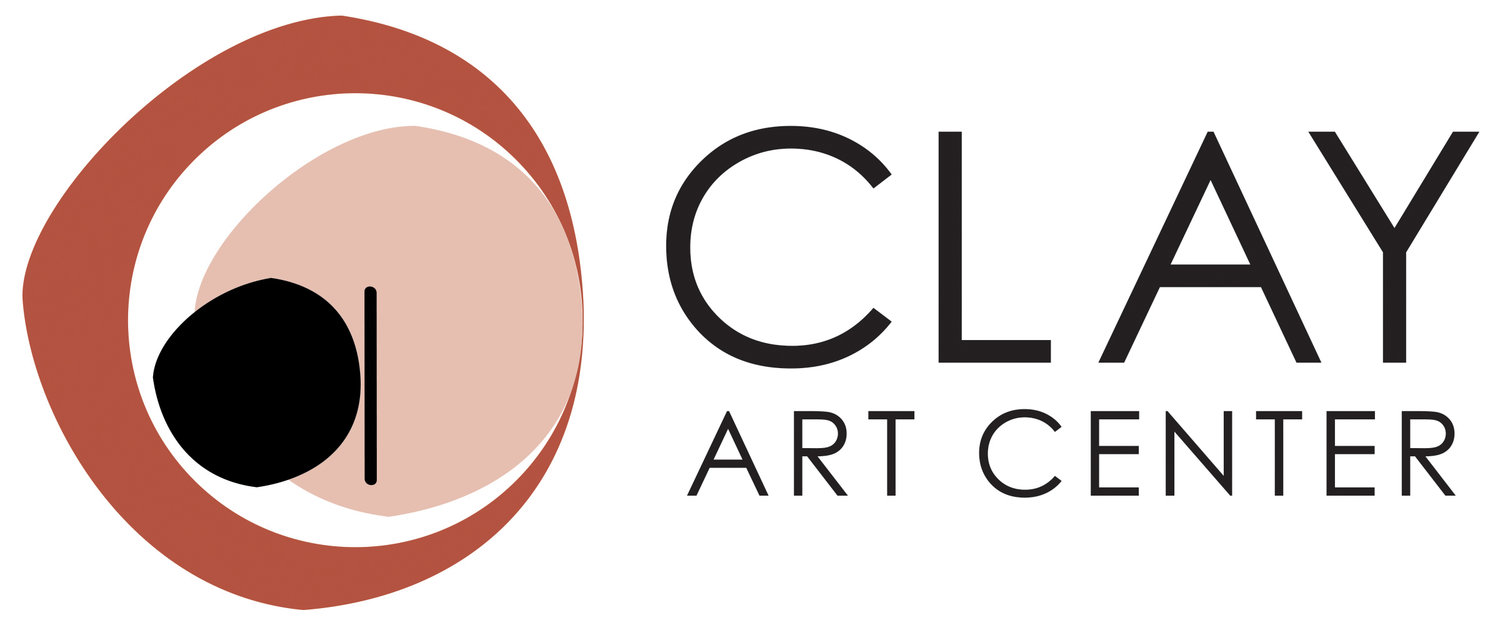Diane Morello's Journey as a Beginner Student at Clay Art Center
Learning to Be a Beginner Again
Blogpost by Clay Art Center Student, Diane Morello
The lump of clay sat in my palm — gray, inert, daring me, taunting me, inviting me. I lifted the two-pound lump in my right hand and with momentum slammed it into the center of the pottery wheel’s steel platter. It was my first pottery class, and I was ready to wow my friends and family with stunning vases, sculptures and bowls.
Two wheels over, the instructor demonstrated our first challenge, then issued a clear instruction: “Build a cylinder.” Easy, I thought. I shimmied the stool closer to the wheel, my knees bracketing the machine, my right foot on the speed pedal and my left foot balancing on a brick. Dipping my hands in a bucket of water, I pressed the speed pedal and swatted the lump of clay until it felt stable on the steel platter. I placed my hands around the clay and squeezed the lump, raising it, flattening it, raising it, flattening it until the clay was centered with no wobbles or creases.
My head positioned directly over the clay, I brought my thumbs to the center of the mound and gingerly pressed downward. A pottery needle measured the depth of the bottom — about half an inch, thick enough.
Too deep and the bottom would tear, too shallow and excess clay would make the piece too heavy.
The instructor’s words floated in the studio classroom: Be patient. Be careful. Be gentle. My thumbs pressed into the hole and pushed the wall outward, widening it bit by bit. I slowed the spinning platter and leaned back, stretching out my spine and my knees. Next to me and across from me, other potters leaned over their wheels: Beginners throwing small pieces, advanced students throwing huge bowls, vases and sets of mugs.
I examined my clay. The lump was now a mound with a hole. Not bad.
I positioned my head over the mound and pressed the pedal. Holding a tiny sponge inside the hole with my left hand, I rested my right knuckle at the bottom of the outside wall and steadily pressed inward. I counted to four before moving the knuckle upward a half inch, then another half inch until I reached the top of the piece. I remoistened the sponge, wet my hands and repeated the count — one Mississippi, two Mississippi, three Mississippi, four Mississippi — for every move upward. Circular rings formed. The shapeless lump now looked like a tumbler.
I went in for round two. I pressed my knuckle on the outside of the piece and raised the clay wall again. Even rings appeared. I dropped the sponge into the water bucket, placed my wet hands around the outside of the piece and pressed the clay to recenter it and smooth it. I placed a flat piece of wood at right angles to the wall and pressed out the rings.
Things were going well. The outside walls were straight. I wet my left hand and this time worked the inside wall, trying to match the shape of the outer wall. Count to four again before making the next move. Circular rings appeared on the inside in line with my finger positions. All looked good. From the shapeless lump of clay I had built a cylinder, taller by three or four inches than the starting piece. It wouldn’t be long until I would compete in England’s Great Pottery Throw Down. Perfect!
But wait, what was happening? At the edge of the cylinder an uneven lip formed right where my dominant hand worked the clay. I could fix that, for sure. I went at it again. I wet my hands, bent over the clay and worked the piece again, squeezing and compressing. The lip worsened. I compressed it again and again and again. Within seconds, the wall of the cylinder puckered, buckled and collapsed — and so did my confidence.
Class after class turned out to be a lesson in humility, a reminder that no matter how practiced or skilled I was in other areas and pursuits, in this I was a beginner. The instructor’s words became my mantra: Be patient. Be careful. Be gentle. I grabbed another two-pound lump of clay and started again and again and again. Because that’s what we beginners do. We start again until we get it right and move forward.
To learn more about Clay Art Center’ classes for the beginner, intermediate or advanced student visit our classes page on our website.
Or try a one-time class, a great introduction to clay. Learn to use the potter's wheel in Maker Night (17+) or Family Wheel Night (10+). Or try our handbuilding class, Saturday Clay (6+).
Our Winter Term 2023 classes will run January 8 - March 12. Member Only registration opens on December 14th at 7:30am and General registration opens on December 16 at 7:30am.
If you have any questions, or need help deciding which class would be a good fit for you, please contact mail@clayartcenter.org

